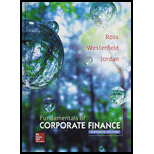
Case synopsis:
Company S is a real estate firm, whose CEO (chief executive officer) is Person R. The firm buys a real estate and rents it to the tenants. The firm gains profit every year. Before the foundation of Company S, Person R was the CEO and the founder of Company A, which is a farming operation. Company A was a failure firm, which ends up with bankruptcy. This situation made Person R to be extremely averse towards debt financing.
Hence, the company is completely financed through equity. Company S is assessing a plan to buy a huge tract of land, which would be leased to the tenant farmers. This purchase is predicted to raise the annual earnings before tax in perpetuity. Person J is the new CFO (chief financial officer) of Company S, who has found the present capital cost of the company.
Person J felt that the company will be very valuable if it adds debt in its capital structure. While evaluating whether the company could issue debt to completely finance the project, she found that it can issue bonds at a par value with the coupon rate. She also found an optimal range of capital structure between 70% equity and 30% debt to maximize its value.
Characters in the case:
- Company S
- Company A
- Person S
- Person J
Adequate information:
- If Company S moves beyond the 30% debt, the bonds issued by the company will have a lower rating and a greater coupon, as the possibility of financial distress and the associated cost will increase.
- Company S also has a corporate rate of tax.
To construct: The
Want to see the full answer?
Check out a sample textbook solution
Chapter 16 Solutions
Fundamentals of Corporate Finance with Connect Access Card
- A brief introduction and overview of the company"s (a) uk vodaphone -300word history and current position in respective marketplace.A graphical illustration, together with a short written summary, of the five year trends in sales, profits,costs and dividends paid-100wordarrow_forwardA brief introduction and overview of the company"s (a) uk vodaphone (b) uk Hsbc bank, (c)uk coca-cola history and current position in respective marketplace.arrow_forwardKing’s Park, Trinidad is owned and operated by a private company,Windy Sports Ltd. You work as the Facilities Manager of the Park andthe CEO of the company has asked you to evaluate whether Windy shouldembark on the expansion of the facility given there are plans by theGovernment to host next cricket championship.The project seeks to increase the number of seats by building fournew box seating areas for VIPs and an additional 5,000 seats for thegeneral public. Each box seating area is expected to generate $400,000in incremental annual revenue, while each of the new seats for thegeneral public will generate $2,500 in incremental annual revenue.The incremental expenses associated with the new boxes and seatingwill amount to 60 percent of the revenues. These expenses includehiring additional personnel to handle concessions, ushering, andsecurity. The new construction will cost $15 million and will be fullydepreciated (to a value of zero dollars) on a straight-line basis overthe 5-year…arrow_forward
- You are called in as a financial analyst to appraise the bonds of Ollie’s Walking Stick Stores. The $5,000 par value bonds have a quoted annual interest rate of 8 percent, which is paid semiannually. The yield to maturity on the bonds is 12 percent annual interest. There are 12 years to maturity. a. Compute the price of the bonds based on semiannual analysis. b. With 8 years to maturity, if yield to maturity goes down substantially to 6 percent, what will be the new price of the bonds?arrow_forwardLonnie is considering an investment in the Cat Food Industries. The $10,000 par value bonds have a quoted annual interest rate of 12 percent and the interest is paid semiannually. The yield to maturity on the bonds is 14 percent annual interest. There are seven years to maturity. Compute the price of the bonds based on semiannual analysis.arrow_forwardNeed solution this wuarrow_forward
 Financial Accounting: The Impact on Decision Make...AccountingISBN:9781305654174Author:Gary A. Porter, Curtis L. NortonPublisher:Cengage Learning
Financial Accounting: The Impact on Decision Make...AccountingISBN:9781305654174Author:Gary A. Porter, Curtis L. NortonPublisher:Cengage Learning Intermediate Financial Management (MindTap Course...FinanceISBN:9781337395083Author:Eugene F. Brigham, Phillip R. DavesPublisher:Cengage Learning
Intermediate Financial Management (MindTap Course...FinanceISBN:9781337395083Author:Eugene F. Brigham, Phillip R. DavesPublisher:Cengage Learning





